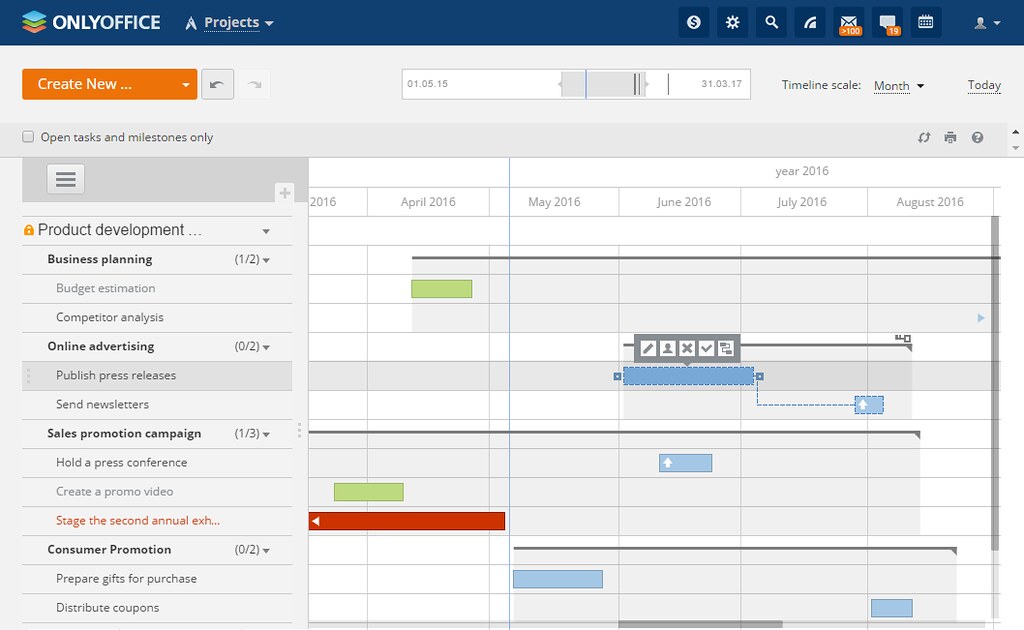
Introduction
Since the beginning of the 20th century, managers, engineers, and professionals have continually sought tools that help in visualizing, tracking, and managing projects. One such tool, which stands out for its simplicity and effectiveness, is the Gantt chart. Named after its originator, Henry L. Gantt, this tool has proved invaluable in representing the duration and relationships between different tasks in a project.
Origins and Evolution
Henry L. Gantt, an American mechanical engineer, and management consultant, first introduced the Gantt chart between 1910 and 1915. The initial charts were quite simple, used primarily to manage daily work at a glance. As industries and projects grew more complex, the Gantt chart evolved to depict more intricate project schedules and dependencies.
By the mid-20th century, with the advent of computers and software development, Gantt charts became more sophisticated. Today, they are a fundamental feature of project management software like Microsoft Project, Trello, and others.
Structure of a Gantt Chart
At its core, a Gantt chart is a horizontal bar chart that represents a project schedule. Here are its main components:
-
Tasks:
Listed vertically on the left side of the chart, these are the specific activities required to complete a project.
-
Timeline:
Spanning horizontally across the top, this denotes the project’s total duration. The timeline can be represented in hours, days, weeks, or even months, depending on the project’s scale.
-
Bars:
Representing each task, these bars stretch across the timeline to indicate the start and end dates. Their length corresponds to the task’s duration.
-
Dependencies:
Some tasks can’t start until others finish. These relationships are often depicted with arrows connecting the dependent tasks.
-
Milestones:
Significant events or achievements in a project are denoted as points on the timeline. They help teams recognize and celebrate when significant phases are completed.
Advantages of Using a Gantt Chart
- Visualization: One of the chart’s primary strengths is its visual nature. Team members can understand the flow of tasks, their durations, and dependencies at a glance.
- Clarification of Task Relationships: By clearly showing dependencies, Gantt charts help prevent resource conflicts and ensure tasks are executed in the correct sequence.
- Monitoring Progress: As work progresses, teams can update the Gantt chart to reflect completed tasks. This makes it easier to track whether the project is on schedule.
- Enhanced Communication: A Gantt chart serves as a communication tool. Whether it’s stakeholders, team members, or external clients, anyone can view the Gantt chart to get an idea of the project’s status.
- Resource Allocation: Gantt charts can be expanded to include resource allocation, ensuring that tasks are adequately staffed and resources are not over-extended.
Limitations of Gantt Charts
- Complexity: For large projects with numerous tasks and dependencies, Gantt charts can become unwieldy and hard to interpret.
- Rigidity: While they display a plan, Gantt charts can sometimes seem fixed. However, project managers should be willing to adjust as new challenges arise.
- Overemphasis on Deadlines: A Gantt chart focuses heavily on dates, which might detract from other critical aspects like task quality or the need for iterative processes.
Summary
Gantt charts have stood the test of time as a premier project management tool, aiding professionals from all fields in organizing, visualizing, and tracking their projects. While they come with some limitations, their benefits often far outweigh the downsides. By understanding how to utilize Gantt charts effectively and combining them with other management tools and strategies, project managers can pave the way for more efficient, transparent, and successful projects.